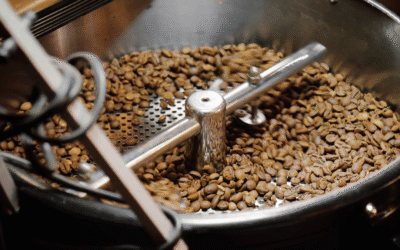Raising chickens has become increasingly popular, whether for fresh eggs, pest control, or simply as pets. However, ensuring they have a safe and comfortable home is essential. The right chicken coop not only provides shelter but also enhances their well-being and productivity.
Choosing the best chicken coop can be overwhelming with so many options available. Factors like size, materials, and ease of cleaning play crucial roles. This guide will help you navigate the top choices, ensuring your feathered friends thrive in the best environment possible.
Top Amazon Sellers
Key Takeaways
- Essential Factors for Chicken Coops: Key considerations include space requirements, durable materials, proper ventilation, ease of cleaning, and effective predator protection.
- Types of Chicken Coops: Options range from rustic wooden coops and lightweight plastic houses to mobile and walk-in designs, each catering to different needs.
- Key Coop Features: Nesting boxes, roosting perches, insulation, lighting, and accessible food and water supply are crucial for chicken comfort and productivity.
- DIY vs Pre-Made Coops: DIY coops offer customisation and cost savings but require carpentry skills, while pre-made coops provide convenience and often include essential features.
- Buying Tips: Consider budget, quality, longevity, and additional upgrades to ensure your coop meets the specific needs of your flock and remains a sound investment.
Factors to Consider When Choosing the Best Chicken Coops
Selecting the right chicken coop influences the well-being and productivity of chickens. Consider these essential factors.
Space and Size Requirements
Adequate space ensures comfort for chickens. A coop should offer at least 0.37 square metres per chicken inside and 0.92 square metres outside. Adjustments might be necessary for larger breeds.
Material and Durability
Use robust, weather-resistant materials for longevity. Wood, metal and plastic offer various benefits. Metal is durable, while wood provides insulation. Consider maintenance needs of each material.
Ventilation and Air Quality
Proper ventilation maintains air quality. Include vents and windows to prevent moisture build-up and ammonia odour. Ensure openings have mesh to block pests.
Ease of Cleaning
Design influences ease of cleaning. Look for removable trays and easy-access doors. Smooth surfaces help maintain a hygienic environment, reducing disease risk.
Predator Protection
Predator protection is crucial. Secure locks, sturdy mesh and elevated designs deter predators like foxes and raccoons. Reinforce weak points to ensure safety.
Types of Chicken Coops
Choosing the best chicken coops involves understanding different types and their specific benefits. Each type caters to various needs based on size, material, and mobility.
Wooden Chicken Coops
Wooden coops offer durability and natural insulation, keeping chickens comfortable in different weather conditions. These structures blend well with garden aesthetics, providing both function and form. Wood’s porous nature requires regular maintenance to prevent moisture and pest issues.
Plastic Chicken Houses
Plastic houses are lightweight and easy to clean, offering convenience for chicken owners. These coops resist weather elements and are less prone to harbour parasites, ensuring a hygienic environment. Despite lower insulation compared to wood, they provide substantial protection and longevity.
Mobile Chicken Coops
Mobile coops, or ‘chicken tractors’, offer flexibility, allowing chickens to graze on fresh pasture daily. These coops are ideal for smaller flocks and temporary setups. Movement reduces the risk of soil-borne diseases and promotes healthier foraging habits.
Walk-In Chicken Coops
Walk-in coops provide ample space for larger flocks and easier maintenance access. These coops accommodate both chickens and caretakers, ensuring regular cleaning and interaction. High vertical space supports better ventilation, contributing to chicken health and productivity.
Key Features of Chicken Coops
To ensure the best environment for chickens, a coop must include several key features. Each attribute significantly impacts comfort, health, and productivity.
Nesting Boxes
Nesting boxes offer chickens a safe place to lay eggs. Each box provides a private area, reducing stress and promoting egg-laying. Coops should include at least one nesting box for every three to four chickens.
Roosting Perches
Roosting perches allow chickens to rest comfortably. Elevated perches, spaced appropriately, prevent overcrowding and reduce aggression. They should be installed at different heights to mimic natural roosting behaviour.
Insulation
Insulation maintains a stable temperature inside the chicken coop. Good insulation keeps chickens warm in winter and cool in summer, promoting their well-being year-round. Quality materials, such as wood or foam panels, enhance thermal efficiency.
Lighting
Proper lighting in a chicken coop stimulates egg production and regulates daily activities. Natural light is best, supplemented with artificial lighting to extend daylight hours, especially in winter. Adequate lighting strengthens health and productivity.
Food and Water Supply
Accessible food and water sources are vital. Automatic feeders and drinkers maintain a constant supply, reducing manual labour. Placing them at an elevated height ensures hygiene by preventing contamination from dirt and droppings.
DIY vs. Pre-Made Chicken Coops
Setting up chicken coops involves choosing between DIY builds and pre-made structures. Each option has its own benefits and disadvantages.
Pros and Cons of DIY Coops
DIY chicken coops offer customisation, letting users tailor designs to specific needs, such as size and aesthetics. They’re often cost-effective. However, they require time and skill in carpentry, and mistakes can compromise safety.
Advantages of Pre-Made Coops
Pre-made chicken coops offer convenience, requiring no construction skills, and ensuring quick setup. These coops are typically designed with optimal chicken welfare in mind, often including important features for ease of maintenance and predator protection.
Buying Tips for Chicken Coops
Selecting the best chicken coop involves various factors to ensure it meets your flock’s needs and remains a worthwhile investment. Consider the following aspects when purchasing a chicken coop.
Budget Considerations
A chicken coop’s cost varies significantly based on size, material, and features. If considering a higher budget limit, prioritise essential features and durability. Factor in not just the initial expense but also potential future costs for maintenance and upgrades.
Quality and Longevity
High-quality chicken coops, constructed from durable materials like treated wood and galvanised metal, offer greater longevity and value. Assessing construction quality, such as robust joints and predator-proofing, helps ensure the coop withstands weather and wear over time.
Additional Features and Upgrades
Consider coops with additional features like built-in nesting boxes, roosting perches, and automatic feeders for convenience. These elements enhance functionality and ease the maintenance process. Upgraded ventilation systems and insulation also contribute to a healthier environment for chickens.
Conclusion and Top Picks
Selecting the best chicken coop is crucial for ensuring the well-being and productivity of chickens. By considering factors like space, materials, ventilation, and ease of cleaning, chicken owners can create a thriving environment. Different coop types offer unique benefits, from the durability of wooden coops to the flexibility of mobile coops.
Essential features such as nesting boxes, roosting perches, and proper insulation contribute to a healthy and comfortable habitat. Whether opting for DIY or pre-made coops, prioritising quality and essential features within budget is key. With the right coop, chickens can enjoy a safe, hygienic, and productive living space.
Frequently Asked Questions
Why raise chickens at home?
Raising chickens at home provides fresh eggs, natural pest control, and companionship. Chickens can be a rewarding addition to your household, offering educational opportunities and a steady supply of fresh produce.
How much space do chickens need in a coop?
Each chicken requires at least 0.37 square metres inside the coop and 0.92 square metres in their outdoor run. Adequate space ensures their health and reduces stress-related behaviour.
What materials are best for building a chicken coop?
Durable, weather-resistant materials like wood, metal, and plastic are ideal. Wood offers natural insulation, metal provides strength, and plastic is easy to clean and maintain.
Why is ventilation important in a chicken coop?
Proper ventilation is crucial to maintain air quality, reduce moisture, and prevent odour build-up, which ensures a healthy environment for the chickens.
How can I ensure my chicken coop is predator-proof?
Use secure locks, sturdy mesh, and elevated designs to protect chickens from predators. Ensure doors and windows can be securely closed to prevent unwanted entry.
What are the benefits of wooden, plastic, and mobile chicken coops?
Wooden coops are durable and provide natural insulation. Plastic coops are lightweight and easy to clean. Mobile coops, also known as ‘chicken tractors,’ allow chickens to graze on fresh pasture, ideal for small flocks.
Why are nesting boxes and roosting perches important?
Nesting boxes provide a safe space for egg-laying, and roosting perches offer comfortable resting areas. Both are essential for mimicking natural behaviours and ensuring the chickens’ well-being.
Should I buy a pre-made coop or build my own?
Pre-made coops offer convenience, quick setup, and optimised designs for chicken welfare. DIY coops allow for customisation and can be more cost-effective but require time, skill, and proper safety measures.
What features should a good chicken coop include?
A good chicken coop should have nesting boxes, roosting perches, proper ventilation, insulation, and accessible food and water supplies. These features ensure a healthy and thriving environment for the chickens.
How do I maintain hygiene in a chicken coop?
Regularly clean the coop by using designs with removable trays and smooth surfaces. This makes it easier to remove droppings, old bedding, and prevent the build-up of harmful bacteria.












